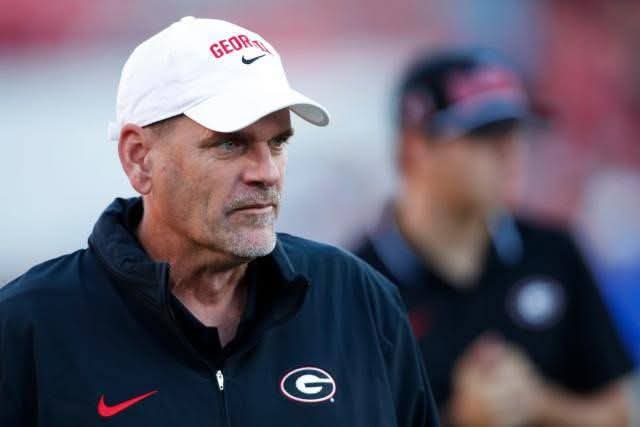Georgia Bulldogs OC Mike Bobo Sounds Alarm Over NIL Challenges: “We Are Losing Recruits in the Portal to Schools That Are Just Flat Outbidding Us”
The rapidly evolving landscape of college football’s Name, Image, and Likeness (NIL) deals has raised serious concerns for programs like the Georgia Bulldogs, as they face mounting challenges in retaining and recruiting top talent. Georgia’s offensive coordinator, Mike Bobo, recently voiced his frustrations, acknowledging that the Bulldogs are struggling to compete in the NIL space, with rival schools offering lucrative financial packages to transfer players that Georgia simply cannot match. His comments bring attention to the broader issue of NIL-driven recruiting and its potential impact on the future of college football.
The NIL Era and the Transfer Portal
Since the advent of NIL rights in 2021, college athletes have been able to sign endorsement deals, monetize their social media, and receive compensation for their brand. This has created a new reality for college football programs, with wealthier schools using their financial resources to attract and retain players. While NIL was initially designed to allow athletes to profit from their personal brand, it has increasingly become a key factor in recruiting, with programs competing to offer more lucrative deals.
Bobo’s comments highlight the growing disparity in the resources available to various programs, with some schools using their NIL collectives and partnerships to outbid others. The transfer portal, which allows players to switch schools without sitting out a year, has become a major avenue for athletes to capitalize on NIL opportunities. Schools with powerful NIL infrastructures are now in a position to lure top recruits and transfers with promises of significant financial compensation, leaving programs like Georgia scrambling to keep up.
How Much Are Transfers Being Offered?
While specific numbers vary depending on the player, some high-profile transfers in recent years have been reported to receive deals worth six figures—sometimes even more. The exact figures can be hard to pin down, as many deals are negotiated privately, but reports have surfaced indicating that players could be offered anywhere from $50,000 to $1 million in NIL compensation, depending on their marketability and talent. For example, quarterbacks, wide receivers, and high-profile skill players often attract the biggest offers, with some schools even making offers in the seven-figure range.
This shift in recruitment dynamics means that programs with deep-pocketed boosters and robust NIL collectives are able to provide more attractive offers to athletes considering a transfer. For example, schools like Texas A&M, USC, and Miami have reportedly used their financial resources to offer significant NIL packages, pushing them ahead of traditional powerhouses like Georgia in the bidding war for talent.
The Impact on Georgia and Other Schools
For Georgia, a program that has historically relied on player development, coaching, and a strong team culture to build its championship-caliber teams, this new NIL-driven competition presents a difficult challenge. Bobo’s comments reveal that while the Bulldogs are still one of the most successful and well-coached teams in the country, they are struggling to match the financial offers that other schools are presenting to recruits in the portal.
The rising importance of NIL in recruiting has raised concerns about the future of college football’s competitive balance. Schools that may not have had the same historical success or tradition are now able to lure top talent simply by offering more financial incentives. For Georgia and other schools in similar positions, this creates a difficult dilemma: focus on developing players and building a program, or dive deeper into the NIL arms race, risking the potential disruption of team culture and long-term success.
Looking Ahead
As NIL continues to evolve, it’s likely that the divide between schools with abundant financial resources and those without will continue to grow. For Georgia, maintaining its status as a perennial contender while navigating this new landscape will require both innovation in NIL strategies and a commitment to their foundational strengths—coaching, player development, and team cohesion.
Mike Bobo’s comments serve as a wake-up call for the entire college football world, as programs scramble to find ways to compete financially without sacrificing the integrity of the game. The future of NIL in college sports will continue to shape recruiting in ways that may forever change the fabric of college football, and schools like Georgia will need to adapt quickly to stay competitive in this new environment.
